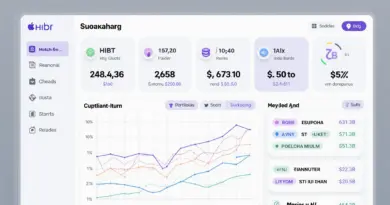How to Start Crypto Investing: A Beginner’s Path to Smart Decisions
Cryptocurrency investing has moved from the fringe to the forefront of global finance. Yet for beginners, navigating the volatile waters of digital assets can feel like stepping into a storm without a compass. With over 420 million crypto users globally as of 2023 (Statista), the urgency to understand how to start crypto investing responsibly has never been more pressing. This guide demystifies the process, addresses common pain points, and equips you with data-backed strategies for your first steps.
Understand the Why: Clarity Before Capital
Before choosing a coin or platform, define your investment purpose. Are you seeking long-term growth, hedging against inflation, or high-risk, high-reward speculation?
According to a 2023 Pew Research Center survey, only 16% of U.S. adults who invested in crypto felt it improved their financial situation. The rest cited unclear expectations and lack of planning as root causes of regret. This underscores the importance of strategic intent.
Key Tip: Don’t chase trends—chase goals. Start with a risk tolerance assessment and clear investment thesis.
Choose the Right Exchange: Security Over Hype
Security, liquidity, and compliance should be non-negotiable when selecting a crypto exchange. Regulatory scrutiny has intensified following collapses like FTX in 2022, which erased over $8 billion in customer funds (Forbes, 2023). Trustworthy platforms such as Coinbase, Kraken, and Binance.US are regulated and provide transparency in their custody protocols.
What to look for:
-
Two-factor authentication (2FA)
-
Proof-of-reserves auditing
-
Regulatory compliance in your region
-
Cold storage for majority of assets
Pro Insight: Never leave large amounts of crypto on an exchange. Consider hardware wallets like Ledger or Trezor for long-term storage.

Start Small: Dollar-Cost Averaging Wins Over Time
Volatility is the norm, not the exception. In 2022, Bitcoin experienced an average daily volatility of 3.5% (Glassnode). To mitigate the risk of bad timing, use Dollar-Cost Averaging (DCA)—investing fixed amounts at regular intervals.
A study from Morningstar (2023) showed that over 5-year periods, DCA outperformed lump-sum investing in 67% of volatile asset scenarios, including crypto. This approach builds discipline and reduces the emotional impact of market swings.
Example Strategy:
Invest $50 weekly into Bitcoin and Ethereum, regardless of market conditions.
Don’t Skip Research: DYOR Is Not Just a Meme
With over 10,000 active cryptocurrencies, blindly following social media hype is a recipe for losses. Rely on whitepapers, blockchain explorers, and expert commentary from platforms like CoinMetrics or Messari.
Evaluate these fundamentals:
-
Utility: What real-world problem does the token solve?
-
Tokenomics: Is supply capped? Are incentives sustainable?
-
Community & Development: Are updates frequent and well-documented?
According to MIT’s Digital Currency Initiative, projects with strong GitHub activity and transparent governance models have higher survival rates post-bear markets.
Red Flag to Avoid: Tokens heavily promoted on TikTok or X (formerly Twitter) without verifiable data or use cases.
Address Tax and Legal Implications Early
Many beginners are unaware that crypto is a taxable asset. In the U.S., the IRS treats crypto as property, meaning capital gains taxes apply—even on trades between coins.
The Chainalysis 2024 Crypto Crime Report also highlights that unreported gains are a growing audit trigger. Using tools like Koinly, TokenTax, or CoinTracker can help you track your portfolio and stay compliant.
Quick Legal Guide:
-
Keep detailed transaction records
-
Understand short-term vs long-term gains
-
Know your jurisdiction’s crypto policy (especially for DeFi activities)
Diversify—But Don’t Overcomplicate
Over-diversification can dilute gains and increase your cognitive burden. Start with 2–4 well-researched coins rather than a portfolio of 20 unknown altcoins.
Research from ARK Invest’s 2024 Crypto Report shows that Ethereum and Bitcoin combined accounted for over 70% of institutional crypto holdings, offering a safer foundation compared to speculative assets.
Golden Rule: Stick to what you understand. Crypto is already risky—don’t amplify that with obscurity.
Stay Updated, Stay Sane
Crypto markets operate 24/7, and news impacts prices instantly. Use reputable aggregators (like CoinDesk, The Block, or CryptoSlate) and set up alerts through apps like CoinGecko or TradingView.
However, don’t fall into information overload. Allocate a fixed time daily or weekly for updates to avoid reactionary decisions.
Final Thoughts: Knowledge Is Your Best Investment
Starting crypto investing doesn’t mean going all-in or becoming a tech wizard overnight. It means developing a rational, data-backed approach to an evolving asset class.
If you’re clear on your goals, secure in your process, and proactive about education, you’re already ahead of the herd.
At TheDailyInvestors, we believe that every smart investor starts with the right questions—not the right coins.
About the Author
Jordan M. Varela is a digital assets researcher with a background in behavioral finance and fintech regulation. A frequent contributor to crypto policy whitepapers and advisor to early-stage blockchain startups, Jordan’s mission is to bridge the gap between retail investors and institutional-grade strategies in the crypto space.






